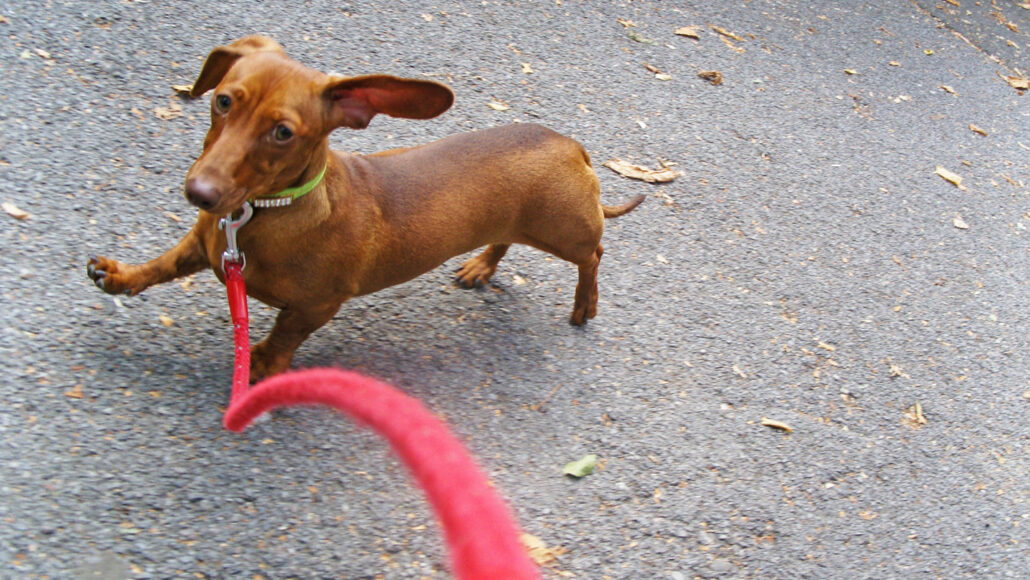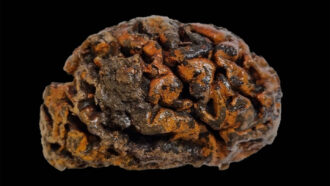Harsh Ice Age winters may have helped turn wolves into dogs
Hunters may have fed overly lean meat to wolves, leading to the canine’s domestication

Too much lean meat? Feed the dog! Ice Age hunters gave lean leftovers to wolves, taking the first step to dog domestication.
Richard Newstead/The Image Bank/Getty Images
By Bruce Bower
In harsh Ice Age winters, game would survive by drawing down their fat reserves. Those animals ended up pretty lean. People can’t eat too much lean meat without getting sick. But wolves can. So in northern Eurasia’s freezing winters, hunter-gatherers may have tossed their overly lean leftovers to wolf pups. Over many, many generations, they turned those wolves into dogs, a new study suggests.
This likely scenario would have helped both wolves and people, say Maria Lahtinen and her colleagues. They work at the Finnish Food Authority in Helsinki. As archaeologists, these scientists study human history and prehistory. Their new idea is based on earlier research about how ancient hunter-gatherers survived Arctic winters.
Between 29,000 and 14,000 years ago, a harsh Ice Age took hold. Now, too cold to find many nuts and berries or other plant foods, Arctic communities would have relied on hunting to survive. But people can’t live on meat alone. This protein can supply the liver only part of what it needs to meet human energy needs.
In fact, eating too much protein can lead to high levels of insulin and ammonia in the blood. Insulin is a hormone that helps regulate blood sugar. Too much of it, however, is dangerous — and can turn deadly. Ammonia in the blood can lead to brain damage. So people need to get some of their calories from fat and carbohydrates.
Today, some Arctic hunter-gatherers acquire 45 percent of their calories from animal protein. Those groups balance out their diets by also eating tubers, roots and other plant foods that they store during the short summers to carry them through frigid winter months.
The researchers’ new proposal assumes that ancient humans had similar diets to modern Arctic peoples. During the Ice Age, those hunters also would have stored edible plants to meet their carbohydrate needs in winter. But these would get eaten up as the annual big freeze wore on, the scientists suspect.
So Ice Age hunter-gatherers probably reached a point where they focused on hunting. They would have killed prey, now, for its bones. Their marrow and grease would offer welcome energy as fat. But, the researchers suggest, these Ice Age peoples would likely have been left with a bounty of lean meat supplied by their lean prey. It would simply be too much protein.
That would leave plenty of meet to nourish any captured wolf pups being raised as pets. Wolves don’t have had the same dietary limits on protein, the team says. So these pets could chow down on the lean meat just fine.
This is not the final word on the origins of dogs. But Lahtinen’s group offers a new take on how dog domestication may have begun. The team published its calculations January 7 in the journal Scientific Reports.
Fed by people, generations of pet wolves would gradually have evolved into dogs, the team proposes. They also would not have competed with humans for prey as often. Only then, the idea goes, were canines docile enough for people to train as helpers.







